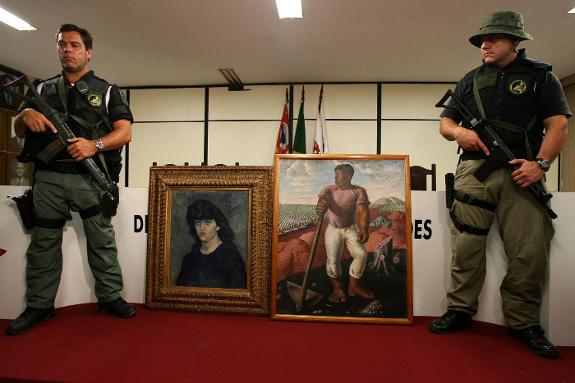20 December 2007: Picasso portrait stolen in daring heist
The Portrait of Suzanne Bloch, as well as Cândido Portinari’s The Coffee Worker, were stolen from the Art Museum of São Paulo
FRANK GAVURIN
Viernes, 20 de diciembre 2019, 14:43
On 20 December 2007, thieves carried out a heist on the Art Museum of São Paulo, making off with Pablo Picasso's Portrait of Suzanne Bloch and Brazilian artist Cândido Portinari's The Coffee Worker.
In an operation which was complete in a matter of minutes, three men broke into the museum at around 5am while security guards were changing shift. They used a jack to open the main door, and a crowbar to smash a glass door, while an accomplice kept watch outside.
The theft sparked criticism of the management of the museum, as it had no alarms, and much of the valuable collection it hosted, with works spanning from Spanish Golden Age master Diego Velázquez to Salvador Dalí, was uninsured.
The thieves' celebrations were somewhat short-lived, however. In January 2008, the paintings were recovered by the Brazilian authorities after being found undamaged in a house on the outskirts of São Paulo. Two arrests were made, with reports in the national press at the time suggesting that police had been informed of the location of the works by a third suspect.
The paintings were returned to the museum, escorted by a helicopter and multiple police vehicles.
The Portrait of Suzanne Bloch is considered one of the last works in Picasso's 'Blue Period'. It was painted in 1904, when the Malaga-born artist was living in Paris. His art at this time was often melancholic, reflecting the difficulties faced by the struggling artist and many of those around him, and was characterised by the use of shades of blue and green.
Bloch, the painting's subject, was an influential singer in Paris at the turn of the century. She owned the portrait until her death, after which it changed hands several times. First it went to the Thannhauser gallery in Munich, before being purchased to form part of a private collection in London. It remained in private hands after being bought by a family in Lugano, Switzerland, and was then held by the National Gallery of Art in Washington DC during the Second World War.
It was acquired by the Museum of Art of São Paulo in 1947 and remains on display in Brazil's largest city today.
